How Do I Get a Pet Passport in the US? 6 Simple Steps
Updated on
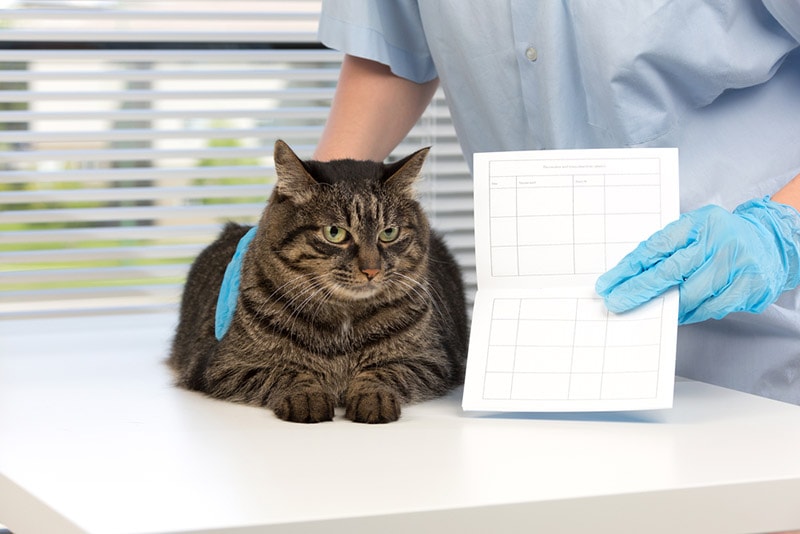
If you want to travel to a different country outside the United States with your pet, you must often have several documents. These documents are called a “pet passport,” as they function similarly to a human passport.
Obtaining one of these passports often involves visiting the vet and getting several vaccinations or tests. The exact ones depend on the country you’re traveling to as they all have their own requirements. Furthermore, you’ll probably have to obtain a health certificate validated by the USDA, which you must pay extra for.
While getting one of these pet passports may sound complicated, it’s easier than most people believe. Below, we’ve outlined all the steps you need to take.
The 6 Steps To Get a Pet Passport in the US
1. Research the Requirements

Each country has different requirements for pets traveling from the US. Sometimes, these requirements aren’t very strict and may only include a rabies vaccination and a clean bill of health. Other times, they may include tests, treatments, and uncommon vaccinations. It all depends on the country you’re traveling to.
Therefore, you need to research the requirements of the country you’re traveling to. Then, be sure to fulfill all of these requirements and get the appropriate documentation.
2. Get Your Pet Vaccinated
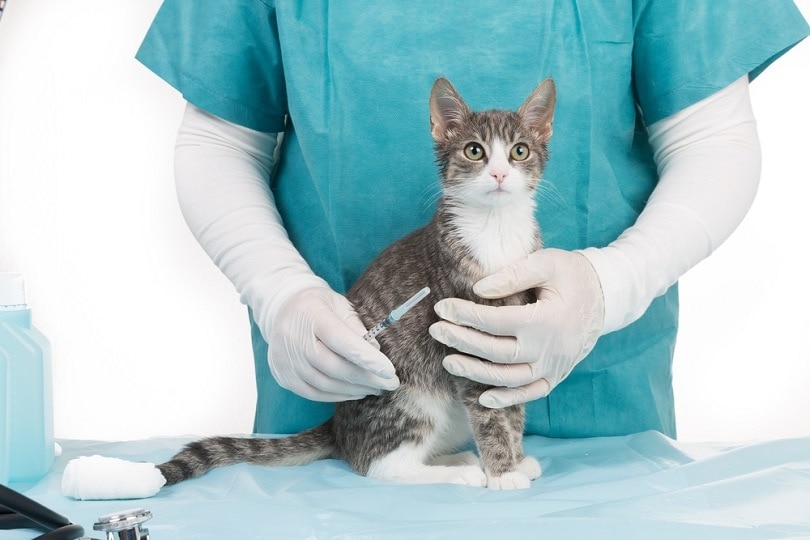
Most of the time, pets are required to be vaccinated when traveling. In many cases, these are the same vaccinations required and recommended in the USA. Therefore, if you’ve been staying on top of your pet’s vaccinations, you might not need to get them vaccinated again. However, sometimes, they are required to get boosters.
Typically, you can vaccinate your pet at the vet’s office when you make an appointment for their health certificate (which we’ll discuss shortly). However, many vaccinations have a waiting period afterward that may be required when traveling. Be sure to give yourself enough time for this waiting period between when you get your pet vaccinated and your travel date.
Sometimes, you can find low-cost clinics that provide some vaccinations for free. While they often provide rabies vaccinations, they may not provide less-common vaccinations required for travel in some countries.
3. Get Your Pet Microchipped
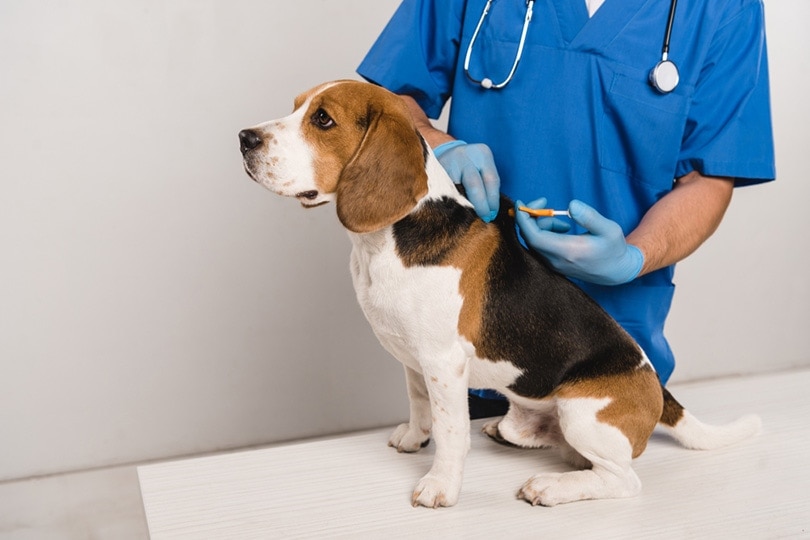
Many countries require microchips for all dogs and cats. Therefore, you may have to get your pet microchipped if you haven’t already. Luckily, this process is often surprisingly inexpensive, and you can find many discount days at clinics where you can get microchips for as little as $5.
Of course, if your pet is already microchipped, you won’t have to worry about this. You’ll need proof of the microchip, though.
If your pet isn’t microchipped, you can request that the vet do it during the health certificate checkup. Microchips start working right away, so there is no need for a waiting period.
4. Obtain a Health Certificate
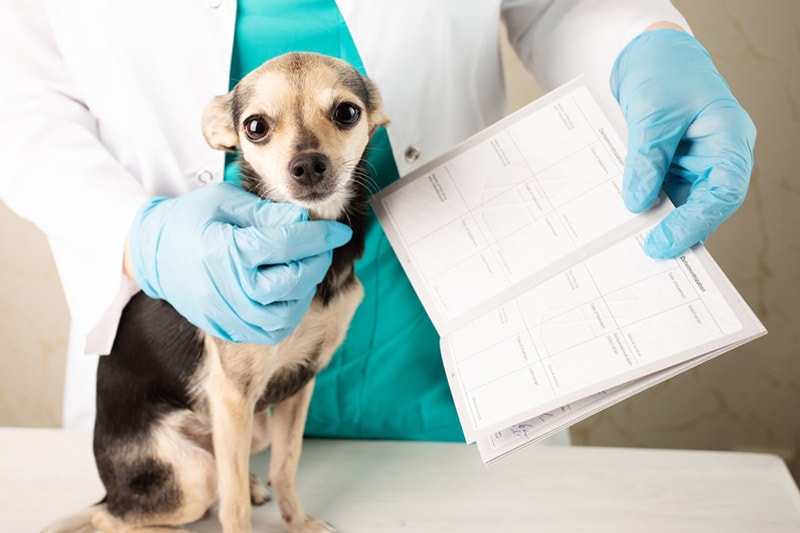
Getting a health certificate is one of the most important parts of obtaining a pet passport. This document states that your pet is healthy to travel and free from contagious diseases. You must schedule an appointment with a USDA-accredited veterinarian to receive this health certificate. You’ll have to pay for the vet visit, as well as any tests and vaccinations that are required.
Not all vets are certified by the USDA. Ensure the vet you choose is, or the health certificate will not be valid. These health certificates are usually only valid for 10 days to 1 month, depending on the destination country. Be sure to plan accordingly. Don’t get the checkup too soon, or the health certificate will no longer be valid when you travel.
During the exam, the vet will thoroughly examine your dog and provide any necessary vaccinations. They will compare their current vaccinations with those required by the country. Be sure to tell the vet you need a health certificate and your destination country when you schedule the visit so that everything can be prepared for you.
Vet visits for health certificates are sometimes more expensive than a normal vet visit, as the vet has to fill out extra paperwork. Plan accordingly.
5. Get Any Necessary Treatments or Tests
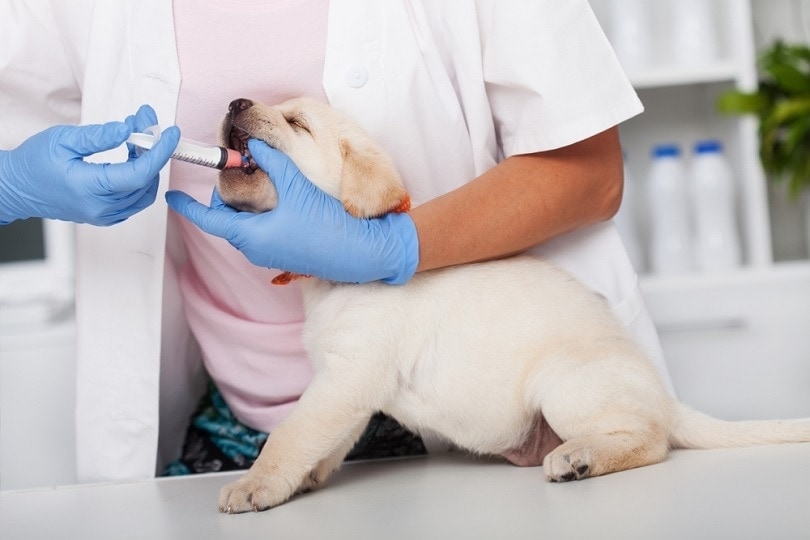
On top of vaccinations, many countries require certain tests or treatments to be done when your pet gets their health certificate. Often, these tests are for common, contagious diseases that the country doesn’t want to be brought in, like rabies. Sometimes, on top of rabies vaccination, your dog will need rabies titer tests, which ensure the dog is immune to rabies.
Other times, countries will require that your dog receive treatment for common health problems—even if the dog doesn’t test positive. For instance, your dog may need to be dewormed for specific parasites before they are allowed in a country.
Most of these tests and treatments can be done at the vet’s office when you get your health certificate. However, they do add to the overall price of the visit, and you’ll have to pay extra for the USDA certification. While vets often research the necessary tests and treatments for the country you want to visit, be sure that you research these requirements yourself, too.
6. Register Your Dog

Some countries require that you register your dog beforehand so you may need to get online and register your canine before you travel. Often, this registration comes with a fee, though it can vary a lot from country to country.
These registrations are in addition to all the other health information we discussed above. However, registering doesn’t typically require you to have this health information on hand. Therefore, you may be able to register your pet before you complete the health certificate exam.
However, most registrations are only good for a certain number of days. Be sure to check.
Conclusion
What documents you need to travel abroad depends largely on the country you’re going to. Different countries have strikingly different requirements. For instance, some countries don’t require much besides a rabies vaccination, which is required for most pets living in the USA. Other countries require testing, certain vaccinations, and treatments, which can take months to complete and cost hundreds of dollars.
We recommend researching a particular country’s requirements as soon as possible. Many requirements take time to complete, so you’ll typically need to start months ahead.
See Also: How Do I Get a Pet Passport in Canada? Step-by-Step Guide
Featured Image Credit: SHUBIN.INFO, Shutterstock










